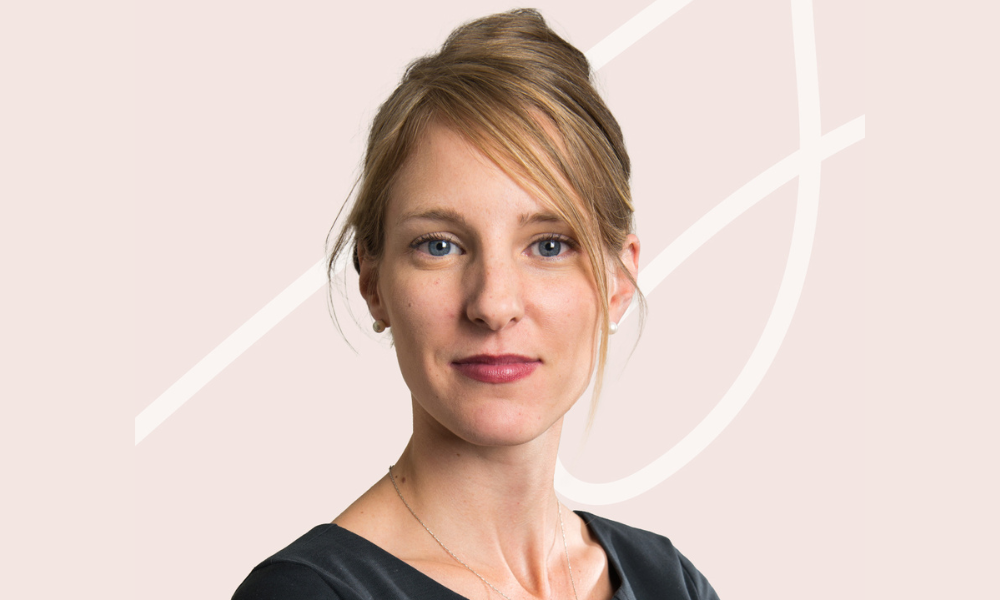Celebrities, league oversight, and media scrutiny added to a complex business transaction

A sports deal is just a deal – except when it’s not. When that deal is the Ottawa Senators Hockey Club sale, it’s so much more.
That’s the experience of the lawyers at Cassels Brock & Blackwell LLP, who worked on behalf of Anna and Olivia Melnyk to sell the Senators. The Melnyk sisters inherited the NHL hockey team (along with its home, the Canadian Tire Centre) when their father and team owner, Eugene Melnyk, died in 2022.
“I tried to deliver this message during the course of the transaction because people were working tirelessly on this thing into the night. I reminded, at least the core group, that the pleasure you’re going to have when this thing is complete – call it the bragging rights, the recognition, your profile – it’s going to last your whole career,” says Sheldon Plener, a partner in Cassels’ business law group.
 Sheldon Plener
Sheldon Plener
“From the perspective of a lawyer, at the end of your career, this would rank among some of the very top things you worked on because it’s high profile, and it’s interesting, and the public recognizes that in Canada – it’s hockey and everybody loves hockey. To say you worked on that transaction is a career-building move.”
That’s something Plener can say from first-hand experience. He was the primary lawyer who worked on John Bitove’s NBA bid that led to the creation of the Toronto Raptors basketball team. Plener was also a lifelong friend of Eugene Melnyk’s and was the lawyer who supported him in first buying the St. Michael’s Majors, an OHL team and took the lead during his purchase of the Senators in 2003. He is also an executor of Eugene Melnyk’s estate.
Despite his interest in sports deals, Plener is primarily a business lawyer with expertise in M&A and other commercial transactions. His colleague, Luke Woolford, a partner in the same group, has a similar type of M&A and corporate finance practice. Woolford managed the day-to-day legal operations of the sale and supervised the core legal team of four or five members and an extended group of approximately two dozen.

Luke Woolford
“There is a lot of enjoyment you can derive from working on high-profile sports or sports-entertainment transactions, but at the end of the day, it’s still an M&A deal. The hours were long, and I’m sure there were plenty of weekends and evenings when my team would have preferred to be watching the game on TV rather than sitting at their computers, writing a contract about a hockey team,” says Woolford.
“You have to enjoy – or at least take some professional satisfaction from working on – a transaction, regardless of the subject matter, that offers complexity and sophistication, a good working team, and a good relationship with other professionals involved. Those are the sorts of things you will encounter on every single deal, regardless of whether it’s a high-profile deal or not, and those are the sorts of things you need to focus on as measures of success and professional enjoyment on a transaction.”
Public interest and publicity
From Plener’s point of view, the deal's goals were simple: getting the best price possible for the sale, keeping the franchise in Ottawa and ensuring that the new owner would offer long-term sustainability to the team. Having a healthy and competitive team isn’t just crucial to the players and fans but to the Melnyk estate as well, as it wanted to retain a minority (10 percent) ownership interest.
Given that a Canadian hockey team was up for sale, media coverage was to be expected, as was speculation about the deal. And when celebrities started making headlines about wanting to buy the team – at one point, Deadpool actor Ryan Reynolds, rapper Snoop Dogg and singer/songwriter The Weekend all expressed at least some level of interest – that just increased the media pressure. And the scrutiny made a challenging deal-making process even harder.
“That level of attention… threw up some roadblocks and challenges for us during the process itself, trying to stay ahead of the leaks and media coverage,” says Woolford.
Chief among those was ensuring that all the bidders received the same messaging and were given identical expectations and deadlines. Woolford says bidders’ actions started to be influenced by what they heard in the media.
According to Plener, the Cassels team and its hand-picked banker, Galatioto Sports Partners (GSP), worked to keep “the process sacred and follow it through to give everybody an equal opportunity to be a successful bidder,” but with a “record number” of bidders and several celebrities in the mix, there were all kinds of reports about what was supposedly happening behind the scenes. Most, however, were either totally false or just sprinkled with some small kernels of truth.
“When statements were made, particularly by celebrities, other [bidders] felt, ‘Oh, maybe we haven’t got a good shot at this because everybody seems to be in love with this celebrity or that celebrity,” says Plener.
“Some bidders thought they had an advantage because they were named in press reports, which may or may not have been true, and then they tried to leverage that advantage, and then other bidders, who were not being mentioned in the press reports felt like they’d been swiped,” adds Woolford.
Another set of eyes
In addition to all the public interest, the Cassels team had to contend with an additional party as part of the process: the league itself.
“Remember, the NHL is looking over our shoulder every step of the way,” says Plener. “Before anybody was allowed to participate, they had to sign a non-disclosure agreement with regard to the information received. The NHL does background checks extensively for each bidder. They have their own agreements that they enter into with each bidder. They get financial information about each bidder: source of financing, personal net worth, etc,” explains Plener.
The NHL controlled critical aspects of the eventual deal, such as the leader of the buying group, Michael Andlauer, divesting himself from his 10 percent minority interest in the Montreal Canadiens (a team valued at US$2.5 billion).
“From our perspective, we were less concerned about how that was going to be achieved. We just knew it would have to be addressed in some way. Where I think it becomes relevant for us was when we were thinking about certainty to close,” says Woolford. “Could that potentially present a challenge in terms of getting this deal closed if that process didn’t run smoothly?”
While it was a very interested party, the NHL let the Cassels legal team take the lead when it came to drafting the deal.
“They provided some input, but I think we drove it. It was very cooperative. And they agreed with most of our documents. They may have had some comments here or there. [NHL commissioner] Gary Bettman and [deputy commissioner and chief legal officer] Bill Daly are fantastic. I like to say if I called them, they’d call me back faster than my own son would if I left a message. That’s how cooperative they were,” says Plener.
“And I dealt with their in-house legal team. Similarly, they had an open-door policy. They were always willing to speak with us – both with us and with buyer’s counsel – so that was really helpful,” says Woolford.
Plener and Woolford describe working with the NHL as akin to dealing with a regulator.
“I would say having the NHL be so intrinsically involved in every aspect of the deal was a level of challenge I hadn’t faced before,” says Woolford, explaining that the league was there every step of the way, “from signing the first NDAs to negotiating with the bidders to signing the final documents with the winning group.”
He also notes that the Cassels team worked closely with their counterparts at Goodmans, who acted for the buyer and whom he describes as “superlative and collaborative.”
“It demanded a level of collaboration and cooperation with the buyer that is less common than you would expect to see on a deal, even with a regulatory component, because it was effectively a joint submission with the buyer.”
Juggling act
While, in many ways, the sale of the team was a traditional M&A transaction, with all of the inherent aspects that are typically part of a deal – real estate and intellectual property transfers, selling shares, managing the employment law and competition law components – the bidding process kept the legal team on its toes.
That’s because “we were really negotiating the formal purchase agreement contemporaneously with two, three, four bidders at a time,” says Plener. “Whereas, in most cases, you have a letter of intent, you boil it down to one bidder, and you’re negotiating one-on-one.”
He adds that the negotiations were all very different, with bidders focused on various aspects of the deal. For example, he says one bidder was concerned about an indemnity of a particular risk while another wasn’t bothered about it. And those negotiations play a role in the final decision to sell.
“All things being equal, if they accept your purchase agreement and you like their price, it’s going to have an advantage over somebody who has heavily marked up the purchase agreement and is offering the same price. That’s why we put the purchase agreement on the table initially,” says Plener.
The length and the complexity of the process, which essentially began with the death of Eugene Melnyk in March 2022 and progressed through the hiring of GSP in September 2022, performing due diligence, setting up a data room and getting out teasers to bidders in the last quarter of 2022, before starting to distribute formal share purchase agreements and narrowing the list of bidders in the start of 2023 until a deal was finally signed in July 2023. Working out the final details took two months between signing and closing. Although Plener and Woolford cannot disclose the final sale price, media reports peg it at US $950 million – a record sale price at the time for controlling interest in a hockey team.
The long period, many parties and moving parts meant Woolford had to manage the legal team carefully. That meant constant communication, responding to all the questions he received, and delivering instructions and guidance promptly.
“In a transaction that goes for a year, people are going to get overwhelmed with other deals or go on vacation. We had to have enough people on the deal that people could step up when others were not available. [We were] always mindful of people’s respective capacity and recognizing when they were getting pushed towards their limits. If they were going to be unavailable, making sure the work was going to be evenly distributed,” he says.
And despite the long hours and the complexities involved, Woolford says it was probably his easiest time getting junior partners and associates, a team of mostly women, to join a file. “I didn't need to ask anyone twice.”
The supporting team at Cassels included Suhuyini Abudulai, Lindsay Dykstra, Holly Elich, Elissa Chamberlain and Jessica Gnitt.
On being a fan
Outside of the legal challenges, both Woolford and Plener were able to appreciate being involved with an iconic part of the Canadian sporting world.
Woolford, who is originally from Australia, admits that “I’m not actually a huge hockey fan, but I am a sports fan, and I enjoy working on high-profile deals, so this was a dream for me to work on, certainly, even if I don’t have hockey in my DNA like a lot of Canadians do.”
Plener found that being a part of the process allowed him to experience a sport in a special way.
“I helped Eugene acquire this asset in 2003. It was a 20-year run and association with the hockey club, initially attending hockey games and going to Stanley Cup finals. It was very rewarding. I don’t act for the Blue Jays. I don’t act any longer for any other sports teams directly. For me, personally, it’s hard to get the same emotion as a fan for a sports team you’re not associated with. Being associated with the Raptors, previously, with the Senators, it’s a special feeling to follow the club and to continue to follow it because you’ve been involved in this process.”










